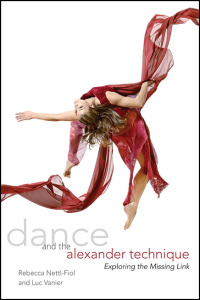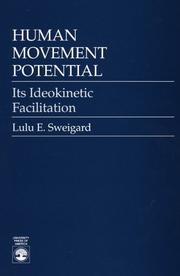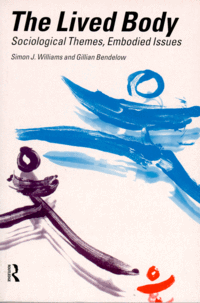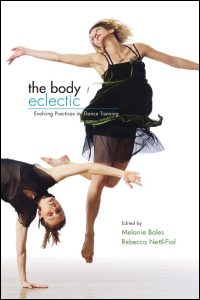So much has been written concerning somatic theory and practice, but how to select the juiciest bits? We have found the following somatic texts, some classic, some more obscure, useful for understanding the many aspects of this field. This is only a small sampling. So much more exists and is yet to be imagined. Looking for a simple way to explore more? Look up some of the authors of the texts below and explore their body of literary work! Another suggestion? Search the themes presented in these descriptions such as breath, consciousness, body integration, self-agency, efficiency in movement etc… Any of these look interesting? Click on the image of the book to purchase either from Amazon.com or another provider! Find anything else of value? Please let us know at simplysomatic@gmail.com!
Featured Authors
Franklin’s body of somatic literary works are particularly relevant in the dance realm. For the most part, his work addresses dynamic-alignment themes and conditioning through imagery for dancers. Two of his texts, Dynamic Alignment Through Imagery and Inner Focus, Outer Strength are particularly intriguing.
Keleman is another example of a prolific somatic author whose body of work is particularly diverse. His works addresses movement expression from a psychological perspective with title such as Emotional Anatomy and Your Body Speaks Its Mind.
Featured Texts
Somatics: Reawakening the Mind’s Control of Movement, Flexibility, and Health Thomas Hanna Founder of Somatics, demonstrates that many problems we accept as inevitable over time: chronic stiffness, pain, fatigue, -need never occur if we maintain conscious control of nerve and muscle, a state which Hanna calls sensory-motor awareness. This gentle, lifelong program can help almost anyone maintain the pleasures of a supple, healthy body indefinitely.
Awareness Through Movement Moshe Feldenkrais Feldenkrais begins with the concept of self-education, and posits that the development of the self relies on action but cannot occur without awareness of sensory information received by and from moving. Awareness Through Movement gives twelve lessons through which these concepts are explored with attention to relationships between parts of the body and their cooperative function.
The Thinking Body Mabel Todd Originally published in 1937, The Thinking Body is a classic study of dynamic postural alignment beginning at basic human functioning: standing and walking. The use of imagery to describe bodily function and alignment in this book reflects Mabel Todd’s teaching methods at Columbia University was revolutionary for her time. Her approach inspired an entire field of study later coined, Ideokinesis.
Dance and the Alexander Technique Rebecca Nettl-Fiol & Luc Varner In collaboration, these scholars of developmental movement and dance training explore relationships between a specific movement technique and basic principles of physical artistry. Applying the tenets of the Alexander Technique through the lens of a specific subset of principles called the Dart Procedures, the authors offer a unique approach for using the Alexander Technique in dance and other activities.
Human Movement Potential Lulu Sweigard Protégé of Mabel Todd, Lulu Sweigard applied the term ideokinesis to her movement analysis and published this book with Harper & Row in 1974. Like Todd’s work, this book focuses on the interdependence of postural alignment and the performance of movement. Sweigard, whose method of teaching body balance and efficient movement has informed kinesiology classes at Julliard since her death, offers a point of view and methodology at odds with the generally employed methods of teaching posture, fitness, sport, rehabilitation or any of the performing arts.
Ideokinesis Andre Bernard, Wolfgang Steinmüller, Ursula Stricker Stricker and Steinmüller present the workshops of André Bernard, an influential shaper of the field of Ideokinesis, and features interviews with Bernard and one of his few texts on the subject, An Introduction to Ideokinesis. This introduction serves as a historical overview of the study of Ideokinesis.
Rolfing Ida P. Rolf Originally published in 1977, in this book, Rolf illustrates her theory and practice of Structural Integration, which brings the body into alignment and balance by manipulation of the connective tissue. Rolfing has helped thousands of people to stand taller, look better, move with greater ease, and have a greater sense of vitality and well-being.
Sensing, Feeling, and Action Bonnie Bainbridge Cohen Between 1980 and 1992 Bonnie Bainbridge Cohen, founder of the somatic method, BodyMInd Centering, was in close collaboration with Contact Quarterly dance journal. This book is a collection of articles written by her for the journal concerning BodyMind Centering themes such as expression, consciousness, perception, and the origins of action and moving.
Exploring Body-Mind Centering Gill Wright Miller, Pat Ethridge, Kate Tarlow Morgan This book features 35 essays on Body-Mind Centering. The book is divided in three sections that showcase diverse situations—from medical illness to blocked creativity—in which this discipline is applied or can be integrated in other areas of study. The book begins with an introduction framing BMC as a pathway to becoming aware of relationships within the body and mind, and concludes with a biography of BMC founder Bonnie Bainbridge Cohen and a history the practice.
Discovering the Body’s Wisdom Mirka Knaster This book offers a wealth of information of more than 60 holistic-health practices and advice for choosing the one that is best for the individual. Knaster coins the term, “bodyways” to collectively describe practices as diverse from massage, to somatic education, to eastern practices, and encourages patience with the self and the body while choosing and working with a practice.
Making Connections: Total Body Integration Through Bartenieff Fundamentals Peggy Hackney Through exercises, illustrations, and detailed anatomical drawings, this book guides the reader toward an experimental approach to total body integration. Analysis of movement fundamentals involving the patterning of connections was part of work by Irmgard Bartenieff, now known as Bartenieff’s Fundamentals. Bertenieff’s work is developed by Peggy Hackney, one of Bartenieff’s close colleagues, in Making Connections.
Groundworks Don Hanlon Johnson This book presents actual accounts of working with individuals of six major schools of Somatics, including Robert Hall of Lomi School, Bonnie Bainbridge Cohen of Body-Mind Centering, and Emilie Conrad Da’oud of Continuum and other leading teachers of Rolfing, Feldenkrais work, and Alexander Technique. Each therapist describes how he or she approaches and diagnoses a patient’s problem, how he or she determines what and where to work, and the progress of a session.
The Lived Body Gillian Bendelow The Lived Body critically examines the notion of human embodiment and argues embodiment is the active basis of being in the world and the foundation of self, meaning, culture and society. It is not therefore a question of choosing between the experimental and representational aspects of the human body, but of exploring their relationship to one another. These issues are illustrated through a variety of themes, including the ”fate” of embodiment in late modernity, sex, gender, the sociology of emotions, pain, sleep and artistic images and representations of the body.
The Body Eclectic Melanie Bales & Rebecca Nettl-Fiol This collection of essays and interviews explores modern-dance technique training from the last fifty years. Focusing on the culture of dance, editors Melanie Bales and Rebecca Nettl-Fiol examine choreographic process and style, dancer agency and participation in the creative process, and changes in the role and purpose of training. This book asks readers to consider the relationship between training practices and choreographic style and content. The contributors explore how technique training both guides and reflects the art of dance.
Anatomy of Movement Blandine Calais-Germain Anatomy of Movement presents a simplistic integrated approach to the study of the physical structures of the musculoskeletal system and their functional relationship to the movements of the human body. The author guides the reader on a lively tour of the muscles, bones, ligaments and joints of the arms, legs and trunk. The focus throughout the book is on anatomy not for its own sake, but in its functional relationship to the actual movements of the body in dance, exercise, and other physical disciplines.
BodyStories: A Guide to Experiential Anatomy Andrea Olsen BodyStories engages the reader as well as the serious student of anatomy. Thirty-one days of learning sessions heighten awareness about each bone and body system and provide self-guided studies. The book draws on Olsen’s thirty years as a dancer and teacher of anatomy to show how our attitudes and approaches to our body affect us day to day. Personal stories enliven the text and provide ways of working with the body for efficiency and healing.
Body and Earth Andrea Olsen “Body is our first environment,” writes Andrea Olsen. “It is the medium through which we know the earth.” In a remarkable integration of environmental science, biology, meditation, and creative expression, Olsen, offers a guide to a holistic understanding of person and place. Part workbook, part exploration, Body and Earth considers the question of how we can best, most responsibly inhabit both our bodies and our planet.
Life on Land Emilie Conrad Conrad’s approach to movement education, health, and healing is as varied and deeply textured as her life story. She interweaves the story of her childhood and discovery of dance with the psychic and physical collapse that led to the development of Continuum, her movement and self-realization technique. This book melds Conrad’s unique theories of the body-mind frontier with fearless discussions of Jewish heritage, sexuality, female identity, and social pressures.
How Life Moves Caryn McHose, Kevin Frank Filled with metaphorical references to our animalistic existance, this comprehensive movement program uses the story of biological evolution as a tool to increase awareness of the origins of movement. Readers learn to “unlearn” inherited bodily habits by embodying the many forms that life has expressed on Earth—from the single cell to the human being—and shifting their perception. Through this evolutionary movement, the body’s native intelligence is revived and new movements can be learned.
Taking Root to Fly Irene Dowd This text presents 10 articles covering such topics as “In Honor of the Foot”, “Finding Your Center”, and “Visualizing Movement Potential”. Dowd illuminates essential topics for the dancer or anyone practicing movement arts, such as grounding and the source of core postural support.



















